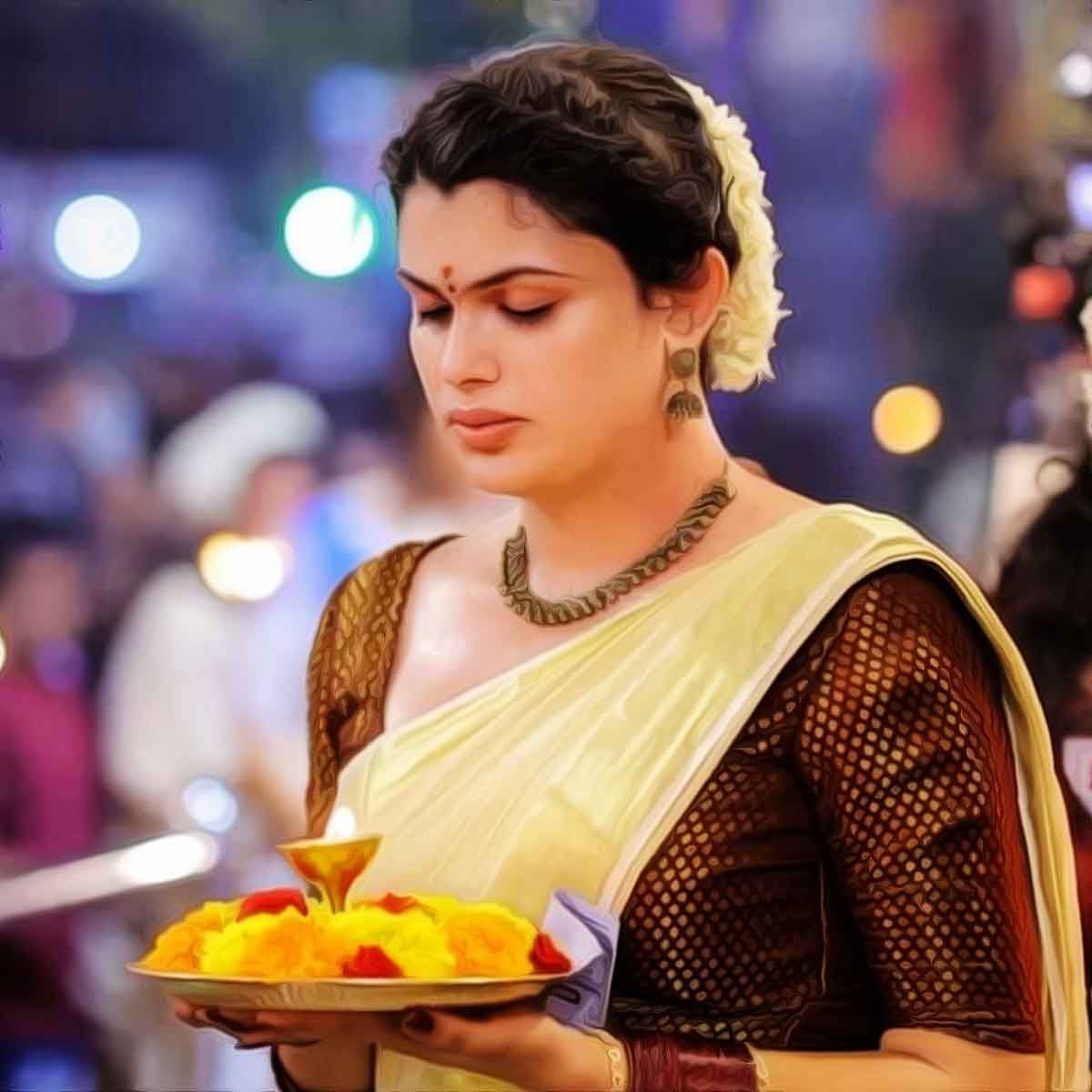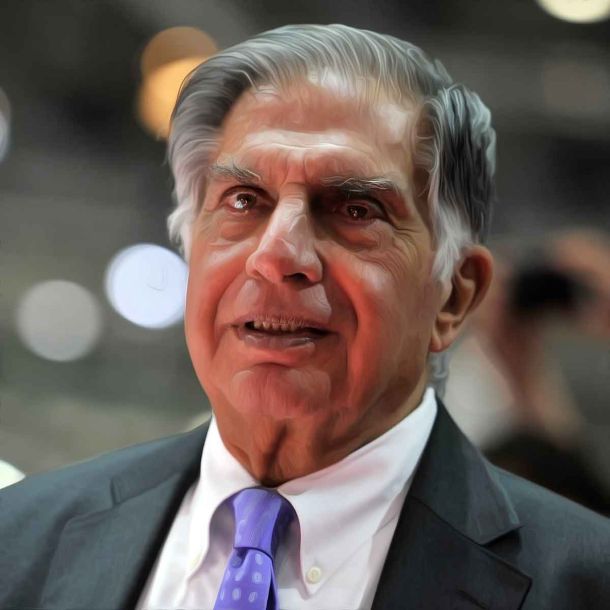More Coverage
Twitter Coverage
Satyaagrah
Written on
Satyaagrah
Written on
Satyaagrah
Written on
Satyaagrah
Written on
Satyaagrah
Written on
Join Satyaagrah Social Media
"The greatness of a culture can be found in its festivals": India is a land of festivals, sometimes rather very unique like Chamayavilakku festival which is celebrated in Kerala and is unique because here men dress up as women to worship Devi Bhagavathy

It is a unique festival and probably the only one of its kind in the world, where men dress up in traditional women's dress and offer prayers. This is the Chamayavilakku festival at the Kottankulangara Sree Devi Temple in Kerala's Kollam district
|
The Kottankulangara Devi Temple is a Hindu temple to the goddess Durga Bhagavathy or Aadi Shakthi, the supreme mother of power, located in the village of Chavara, Kerala, India.
The plot of land where the temple is situated was once part of a tranquil forest surrounded by a thick growth of trees, plants, and creepers. On the northwest corner of the plot, there existed a small deep pond known as Bhoothakulam. People living in the area believed it was a shelter for poisonous snakes. On the eastern side, there was a substantial extensive deep pond. During days of rain, a stream originated from there making the surrounding area fertile and cultivable. As this place was full of grass and pure water, the cow herders from the neighboring area would congregate there with their cattle.
|
Legend
According to the legend, a group of cow herders got a coconut from this place. They found a stone in the southern part of Bhoothakulam. When they hit the coconut on the rock (intending to remove the husk), they found drops of blood dripping from the stone. They explained the phenomena to the elders.
The astrologer suggested that the stone contained supernatural powers and that poojas should be started immediately after constructing a temple. The elders and cow herders built a temporary temple using poles, leaves, and tender leaves of the coconut palm. It was a custom in ancient days that balikas used to prepare flower garlands, and lit the pooja lamps in ancient Kudumba temples.
Accepting this tradition, the cow herders wearing female attire, offered poojas in the temple. The milky liquid prepared from coconut kernel was boiled, the medicinal oil (Urukku Velichenna) was extracted and a solid substance taken (Kottan) was offered to the goddess as Naivedyam.
The stone is regarded as the deity. There is also a belief that the stone has been growing in size over the years.
Now that this ritual has become hugely popular, the festival attracts people of various faiths and a large number of them come from outside Kerala.
As per another legend, according to one of the local beliefs surrounding the existence of the temple, a group of cowherd boys, dressed as girls, used to play around a stone, which they considered as God. To their surprise, one day, the Goddess herself appeared before them from the stone. Soon, the news of this incident spread in the village, and a temple was erected to enshrine the stone, considering its divine will. That is how, perhaps, the tradition of men dressing themselves in female attire took birth. Now, men of all ages, throng the temple each year in womanly garb, holding chamayavilakku (a lamp lit up with five wicks) in order to please the presiding deity and earn her favor.
Sheldon, a youth from Tamil Nadu, was spotted at the temple in the wee hours of Saturday. Asked what brought him here, he said, “I have been hearing about this ritual for a few years now and was wanting to come and finally I have made it. After dressing up as a woman, I felt I have accomplished something which I have been planning for a while.”
Even though the most auspicious time for taking part in the ritual is between 2 a.m. and 5 a.m., owing to a huge rush, one can see a stream of men dressed up and decked up in a typical Kerala saree carrying the lamp at dusk.
Men dressing up as women or girls have to carry lamps, which are available for rent but have to get their own attire. But in case, someone needs help, there are beauticians for assistance.
The lamp is a peculiarity of this temple and is seen here only. The lamps
are mounted on a long wooden rod and rise to the waist.
When the festival concludes early on Sunday, thousands of people would return filled with hope and happiness
|
Chamayavilakku
The Kottankulangara Festival (or Kottankulangara Chamayavilakku) is held annually at the temple, where men from across the state and now even outside it dress in female attire. Cross-dressing is part of traditional ritual festivities and at night they hold traditional lamps and walk in procession to the temple to accompany a traditional orchestra. Devotees visit the temple to seek the blessings of the goddess.
Kuruthola Pandal
In order to commemorate the legend and origin of the temple, the model of the ancient temple is being constructed every year. The devotees stand long lines from Kunjalummoodu to Arattukadavu at the time of Devi's journey from Kunjalummoodu. Seeing this spiritual procession, the devotees derive an unlimited amount of spiritual joy and believe this sight would help them all to have comfort and mental pleasure and be redressed from the unforeseen miseries of life.
|
Jeevatha Ezhunnallathu
Jeevatha Ezunnallathu is mostly in Devi temples. Wearing traditional dress ("Thattudukkal") and with towels firmly tied at the waist and on the head, they carry the Jeevatha on their shoulders and perform the step-dance. The myth behind Jeevatha Ezhunnallathu is The goddess visits her devotees and devotes offering Anpara, Ezhu para to Devi for blessing.
When to visit?
The temple is best visited in March, and several people do so to witness the amazing event. Auspicious hours to visit the temple are 2 AM to 5 AM. Visitors can ask for Chamayavilakku at the shops located outside the temple for rent. And for men keen on playing dress up, temporary shacks are set up by beauticians close to the temple.
It is believed that faith draws thousands of pilgrims to Kottankulangara Sree Devi Temple every year. While some have been absolved from their business debts as reported, others have asked for their sins to be forgiven. This explains why the count of devotees at this temple has increased over time.
 Support Us
Support Us
Satyagraha was born from the heart of our land, with an undying aim to unveil the true essence of Bharat. It seeks to illuminate the hidden tales of our valiant freedom fighters and the rich chronicles that haven't yet sung their complete melody in the mainstream.
While platforms like NDTV and 'The Wire' effortlessly garner funds under the banner of safeguarding democracy, we at Satyagraha walk a different path. Our strength and resonance come from you. In this journey to weave a stronger Bharat, every little contribution amplifies our voice. Let's come together, contribute as you can, and champion the true spirit of our nation.
 |  |  |
| ICICI Bank of Satyaagrah | Razorpay Bank of Satyaagrah | PayPal Bank of Satyaagrah - For International Payments |
If all above doesn't work, then try the LINK below:
Please share the article on other platforms
DISCLAIMER: The author is solely responsible for the views expressed in this article. The author carries the responsibility for citing and/or licensing of images utilized within the text. The website also frequently uses non-commercial images for representational purposes only in line with the article. We are not responsible for the authenticity of such images. If some images have a copyright issue, we request the person/entity to contact us at This email address is being protected from spambots. You need JavaScript enabled to view it. and we will take the necessary actions to resolve the issue.
Related Articles
- Rajasthan: Oldest mosque of Ajmer ‘Adhai Din Ka Jhonpra’ stands over ruins of a magnificent Sanskrit pathshala 'Saraswati Kanthabharan Mahavidyalay': Hindu and Jain temple features found, structure still used by Muslims for Namaz
- "Abandoned homes become magnets for vandalism and crime": Tamil Nadu HRCE Board, trusted with the protection of temples is vandalizing temple sculptures in name of modern construction, greed for Civil Contracts resulted in shocking renovation works
- Largest Hindu temple in the Southern Hemisphere opened in Johannesburg by Deputy President Paul Mashatile, with Mahant Swami Maharaj leading the consecration; built on a 14.5-acre site with 12,500 volunteers, serving as a hub for spirituality and unity
- 'There is a lot more seen inside than imagined, it is beyond the imagination of not only me but all', says Gyanvapi petitioner after coming out of the survey at the disputed structure
- All India Hindu Mahasabha seeks permission to consecrate Laddu Gopal at Shahi Idgah masjid next to Sri Krishna Janmabhoomi in Mathura, court admits plea
- Ahmad Abbasi, reportedly a chemical engineer from IIT Bombay tries to enter Gorakhnath Temple shouting ‘Allahu Akbar’, injures two cops with a sharp weapon: Uttar Pradesh
- "Festivals are like a map charting our spiritual progress in God": India is a land of temples and unique rituals, one such followed by devotees in a Karnataka Temple is Agni Keli, symbolizing the victory of good over evil integral to our cultural heritage
- “True wisdom consists only in the knowledge of Brahman”: Budhanilkantha (Old Blue Throat) Temple, Nepal is a Hindu open air temple dedicated to Mahavishnu, also known as the Narayanan Temple, and can be identified by a large reclining statue of Mahavishnu
- Far-left activist Yogendra Yadav's party leader Gulab Pasha demands to change the route or deny permission for Hindus to hold annual Annamma Devi procession: Claims it will disturb harmony between communities
- Mamata Banerjee led Bengal govt orders to remove ‘unauthorised’ temples and shrines from public places: Asks state police to provide assistance to DMs of 8 districts for the same
- "Ayodhya hui hamari, ab Kashi-Mathura ki baari": Plea submitted in Mathura Court to secure Shahi Idgah Masjid to protect Hindu sacred artefacts after Shivling discovered at wuzukhana in Gyanvapi premises
- PM Narendra Modi inaugurated the Statue of Equality of Sri Ramanujacharya and emphasized 'Progressiveness does not mean detaching from one’s roots and that there is no conflict between progressiveness and antiquity.'
- ‘Lord Shiva helps creation sprout even from ruins, Humanity always wins over terrorism’: PM Modi launches key projects at Somnath
- Malaysia and Singapore are allowing temple entry with Covid protocols but here in Tamil Nadu, India Devotees are denied entry to Palani temple on Thaipusam festival: Thaipusam is an important festival of the Tamil community
- When Secular Nehru Opposed Restoration Of Somnath Temple - The Somnath Temple treachery
























